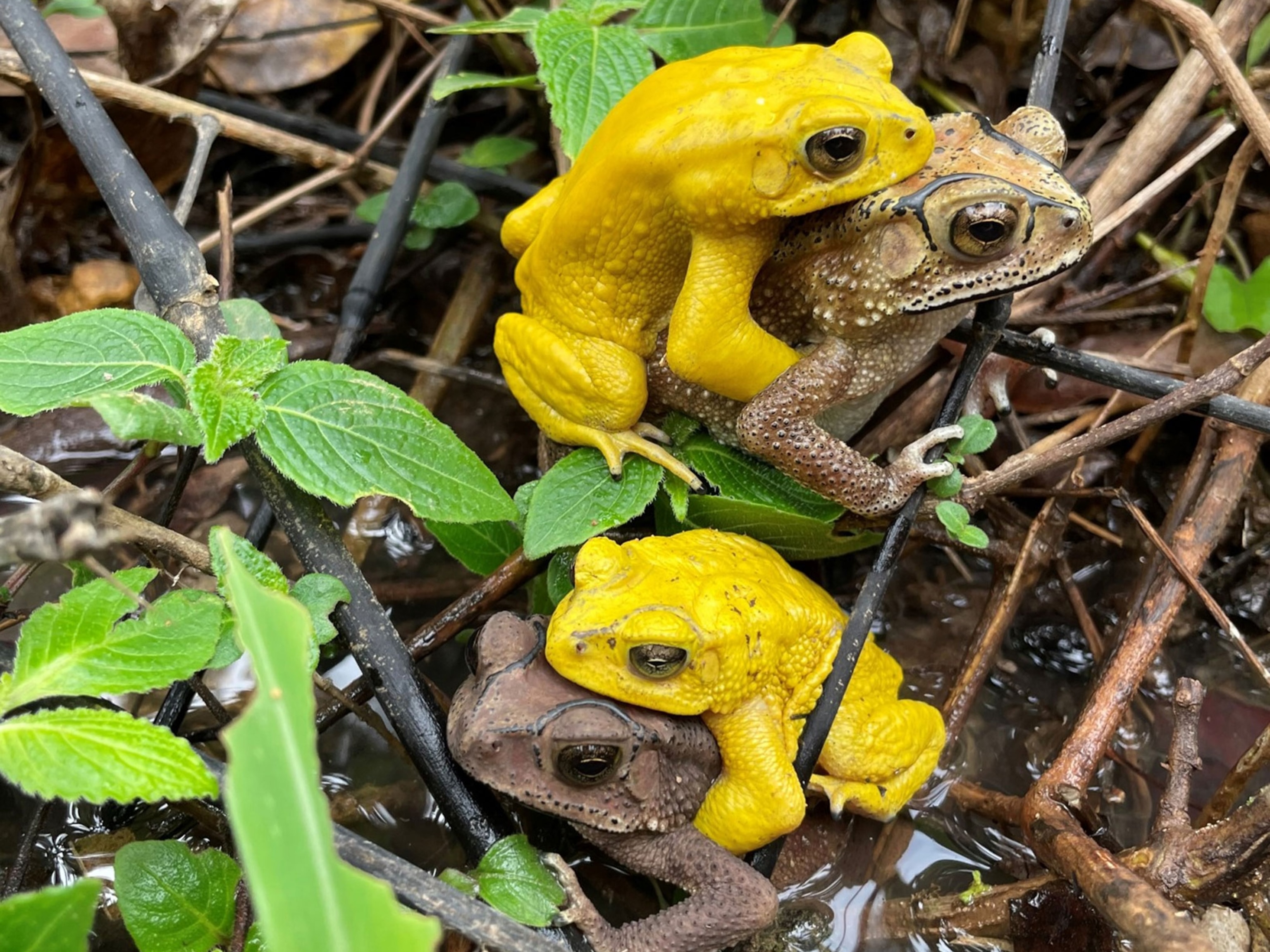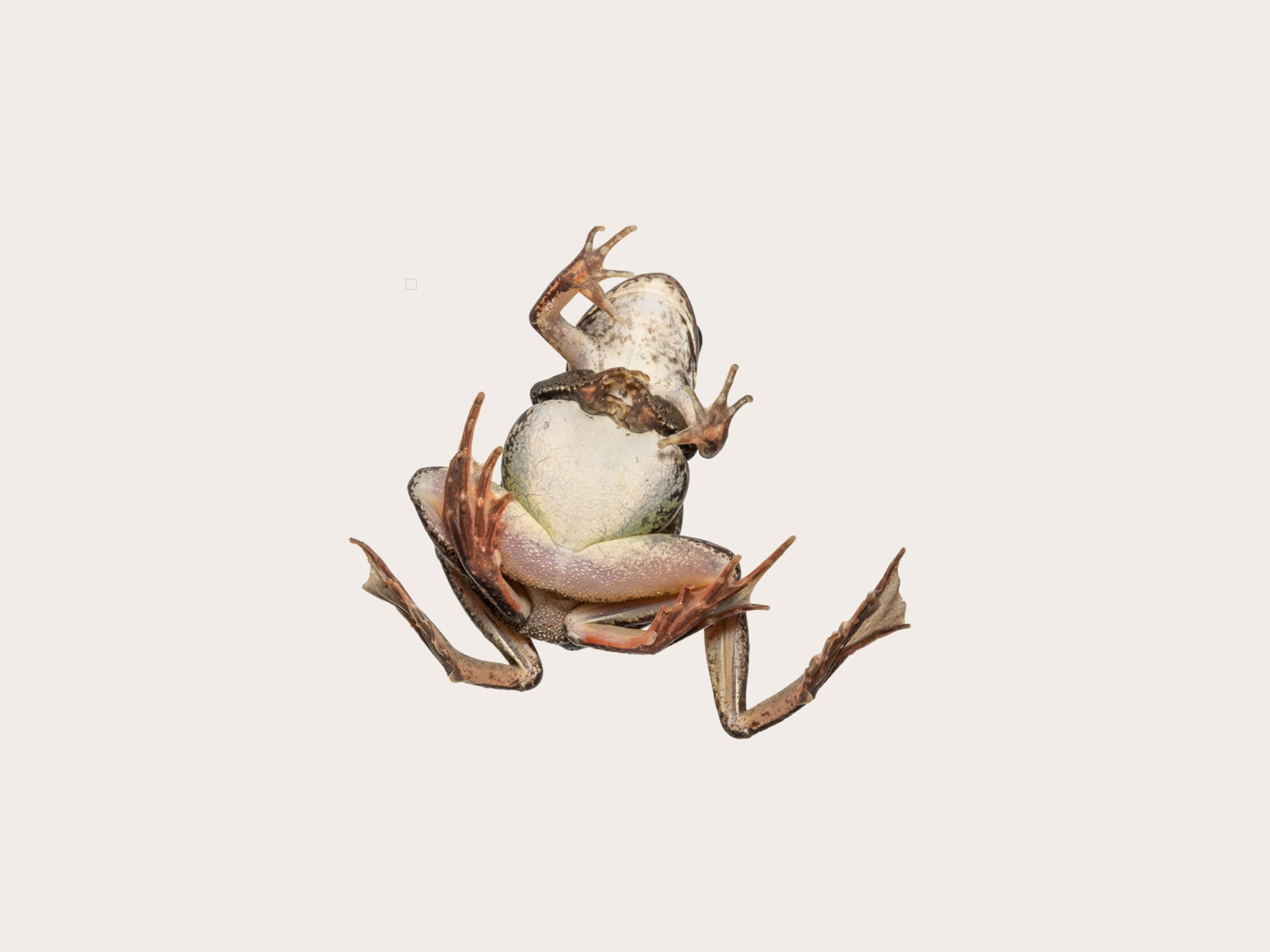
Smallest Frogs Found—Each Tinier Than an M&M
Two new species discovered in Papua New Guinea forest.
How's this for a sweet surprise: Two new species of frog—each smaller than an M&M—have been discovered in Papua New Guinea, a new study says.
Paedophryne dekot—dekot means "very small" in the local Daga language—is about 8.5 to 9 millimeters long. The bumpy-skinned P. verrucosa, meaning "full of warts" in Latin, is an average of 8.8 to 9.3 millimeters in length.
The previous tiny titleholders, also frogs in the Paedophyrne genus, were about ten millimeters long.
(See related pictures: "Pea-Size Frog Found—Among World's Smallest.")
Not only are the newfound frogs the smallest known in the world, they're also the smallest tetrapods, or vertebrates with four legs. The planet's tiniest known vertebrate is the Southeast Asian fish species Paedocypris progenetica, with mature females measuring just 7.9 millimeters.
"I'm always amazed by the size of these small frogs you find—it's really pushing the limit of what's possible," said Robin Moore, an amphibian expert with Conservation International (CI) who was not involved in the study.
Tiny Frogs Tough to Catch
Vertebrate zoologist Fred Kraus found the two new species during a 2011 expedition to an isolated mountain in southeastern Papua New Guinea. (See more pictures: "Thousands of New Species Found in New Guinea.")
Kraus, of Hawaii's Bishop Museum, had previously identified Paedophyrne as a new genus of frog, whose members live solely amid leaves on the rain forest floor.
The frogs probably evolved their small sizes to fill a role in the environment that wasn't being exploited by other creatures, Kraus noted.
For instance, these mini-frogs can eat diminutive prey such as mites, which wouldn't sustain larger frogs, he said.
Scientists located the teensy creatures by listening for their calls and trying to zero in on the sources of the sounds.
In Papua New Guinea, Kraus and a team of local assistants would put their faces close to the ground to spot the frogs then try to catch the amphibians with their bare hands—not an easy task.
"These things spring much like crickets do," Kraus said. "One instant they're here, and in a split second they're way the hell over there."
More Mini-Frogs Waiting to Be Found?
In general, the discovery suggests that more, as-yet unknown tiny frogs are probably hopping around the world's leaf litter.
"Additional miniaturized species no doubt await discovery or description in other poorly surveyed areas of the tropics," the study team writes in their paper, published December 12 in the journal ZooKeys.
"That's what's exciting about this field," CI's Moore added. "You know that new species such as these are going to continue to be discovered."





